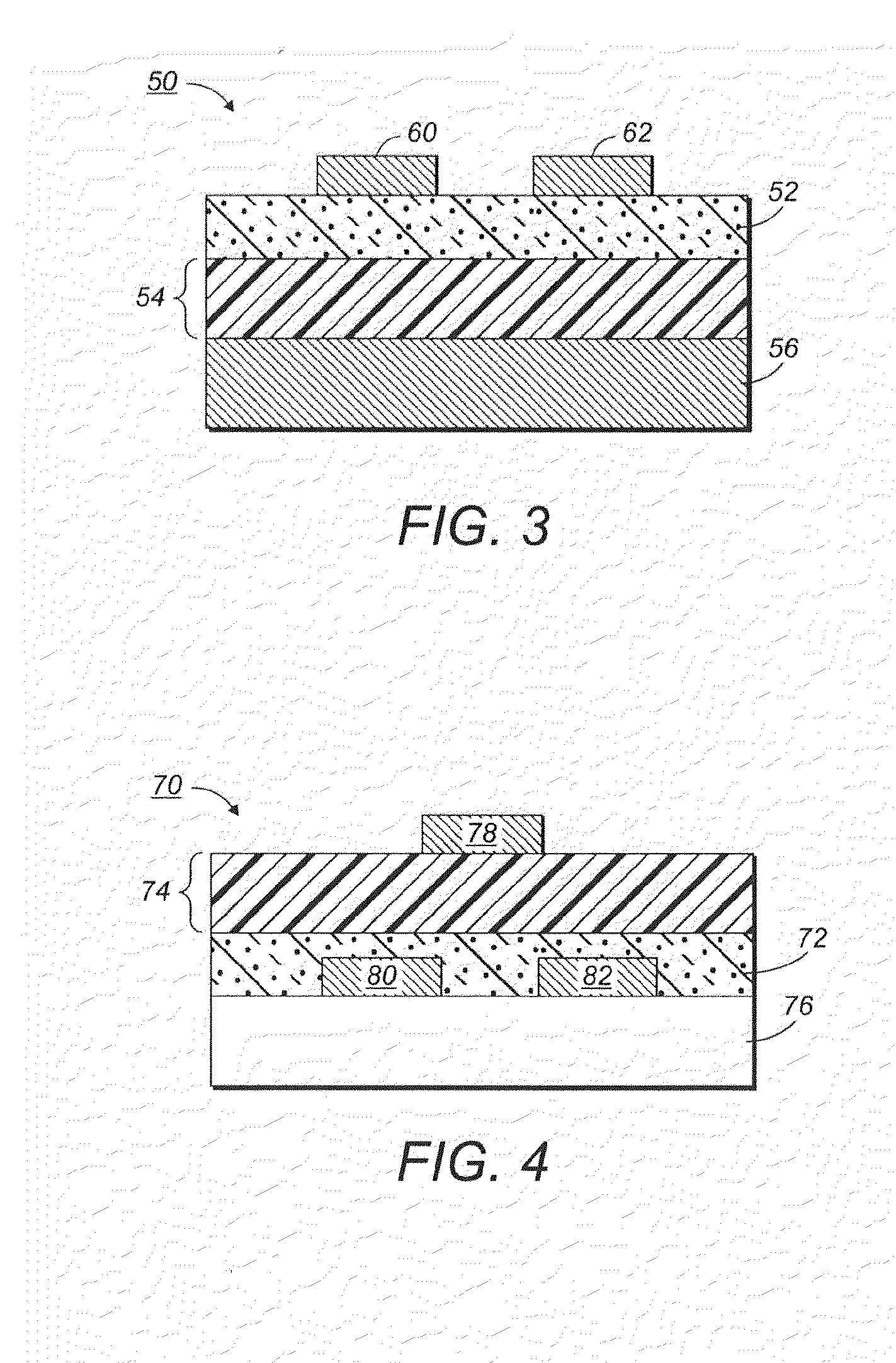Processes for producing palladium nanoparticle inks
a technology of palladium nanoparticles and inks, which is applied in the direction of inks, metal/alloy conductors, and conductors, can solve the problems of pixel pads, conductive traces, lines and tracks which meet the conductivity, processing, and cost requirements for practical applications, and achieve the effect of meeting the conductivity, processing and cost requirements
- Summary
- Abstract
- Description
- Claims
- Application Information
AI Technical Summary
Benefits of technology
Problems solved by technology
Method used
Image
Examples
examples
[0102]Palladium acetate (trimer) (1 gram, 4.5 millimoles), octylamine (0.66 grams, 5 millimoles), and decalin (3.5 milliliters, 3.1 grams) were added to a reaction flask (50 milliliters) to form an initial mixture. The initial mixture was stirred at room temperature under nitrogen for 30 minutes. Phenylhydrazine (0.4 grams, 4 millimoles) was added to the initial mixture to form a reaction mixture. The reaction mixture was heated to 40° C. and stirred for 2 hours, further stirred at 30° C. overnight, and then another 3 hours at 40° C. A black-colored palladium nanoparticle ink resulted. The black-colored ink was cooled down to room temperature and diluted with decalin (6 milliliters). The ink was filtrated using a syringe (25 milliliters) with a glass fiber membrane (1 micrometer). The ink was then spin coated onto a glass slide to form a uniformly thin layer of film without crystallization or precipitation. The film was annealed at 180 to 250° C. for about 10 minutes. The film chang...
PUM
| Property | Measurement | Unit |
|---|---|---|
| wt % | aaaaa | aaaaa |
| temperature | aaaaa | aaaaa |
| particle size | aaaaa | aaaaa |
Abstract
Description
Claims
Application Information
 Login to View More
Login to View More - R&D
- Intellectual Property
- Life Sciences
- Materials
- Tech Scout
- Unparalleled Data Quality
- Higher Quality Content
- 60% Fewer Hallucinations
Browse by: Latest US Patents, China's latest patents, Technical Efficacy Thesaurus, Application Domain, Technology Topic, Popular Technical Reports.
© 2025 PatSnap. All rights reserved.Legal|Privacy policy|Modern Slavery Act Transparency Statement|Sitemap|About US| Contact US: help@patsnap.com



